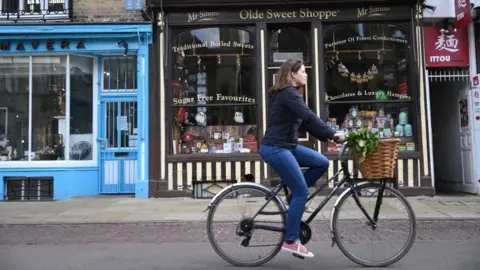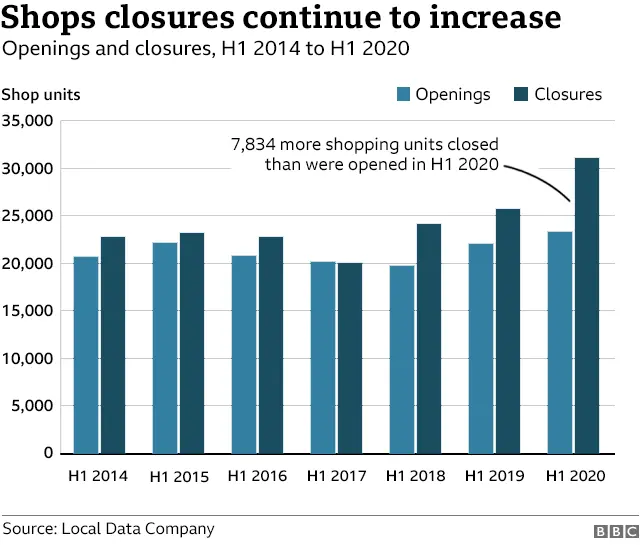Covid: Small shops better at surviving virus than big ones
 EPA
EPAIndependent shops have been "more agile" and better at surviving Covid-19 than chain stores, data indicates.
Small independent firms on the High Street suffered a net decline of 1,833 stores in the first half of 2020, according to research by the Local Data Company (LDC) and accountancy firm PwC.
That was less than a third of the 6,001 chain stores lost, the LDC said.
However, the two sectors together saw the biggest decline seen in the first half of a year since its records began.
Lucy Stainton, head of retail and strategic partnerships at the LDC, said it had been "an immensely challenging few months for the retail and hospitality sector".
She said the independent market had fared better as those businesses had been "more agile, bringing in new product lines and offering food deliveries".
They also had a smaller cost base to cover during periods of little or no trade and had been able to take advantage of government support schemes.

"However, as we continue through the year with various local lockdowns and restrictions, life will not get any easier for operators," she added.
"These figures mark only the first phase in the impact of the pandemic on the retail economy this year, with 20% of the market still temporarily shut and with more months of difficult trading conditions ahead."
During the period surveyed, there were 20,019 closures of independent shops and 18,186 openings.
That compares with 11,120 chain-store closures and 5,119 openings.
Put together, that gives 31,139 closures and a net decrease of 7,834 shops.
In percentage terms, the gap between big and small retailers is even greater, since 64% of the retail and leisure market is comprised of independent businesses, according to the LDC.
That means independent businesses declined by 0.54%, compared with 2.77% for the chain units.
The LDC and PwC have been analysing the changes in the top 500 shopping locations for the past decade.
The LDC said its latest surveys covered the January-to-August period, to compensate for a short time during lockdown when its researchers were unable to work.
However, it said that it had surveyed the same number of units as in a normal first-half period and that its figures were comparable to those of previous years.